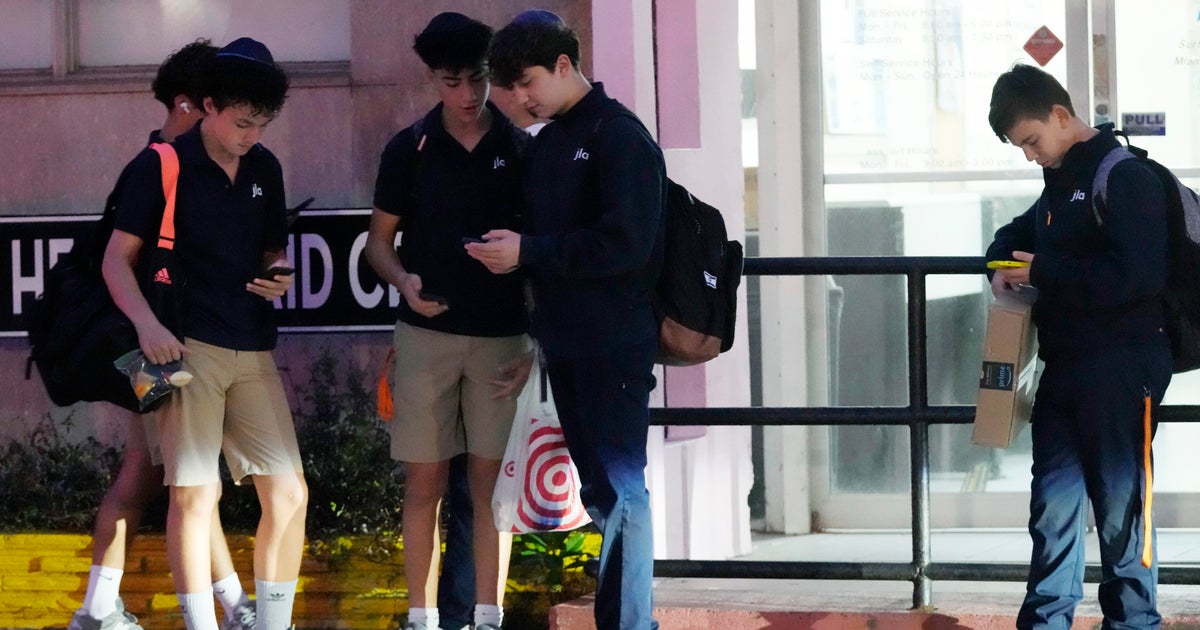Number Of Students Attending Charter Schools Soars
MIAMI (CBSMiami/AP) — Charter school popularity is on the rise, especially in the state of Florida.
According to figures released Wednesday, the number of students attending charter schools has soared to more than 2 million as states pass laws lifting caps and encouraging their expansion.
The growth represents the largest increase in enrollment over a single year since charter schools were founded nearly two decades ago. In all, more than 500 new charter schools were opened in the 2011-12 school year. And about 200,000 more students are enrolled now than a year before, an increase of 13 percent nationwide.
"This 2 million student mark is quite significant," said Ursula Wright, interim CEO of the nonprofit National Alliance for Public Charter Schools, which released the study. "It demonstrates increased demand by families who want to see more high quality education options for their children."
Wright and others attribute the boom in large part to the Obama administration's $4.35 billion Race to the Top competition, which rewarded states for taking on ambitious education changes that included expanding charter schools. In order to qualify, many states changed laws to encourage the growth. Sixteen states have lifted caps on the number of them and student enrollment over the last three years, according to the National Council of State Legislatures.
State Sen. Garrett Mason, who sponsored a charter school bill passed in Maine this summer, said after 17 years of attempts by lawmakers to permit the publicly funded, independently run schools in the state, the time was right.
"We had seen a movement for new ideas at the state level and we were able to articulate the message appropriately," Mason said.
The growth comes even as states have severely cut education budgets. They are helped by continued support from private foundations and the U.S. Department of Education, which announced $25 million in grants for high achieving charter schools in September. Still, charter operators said those sources do not come close to compensating for the huge losses they have experienced in state school funding.
James Willcox, CEO of Aspire Public Schools, California's largest charter school operator, said $20 million in state funding has been lost annually since 2007. After school and academic intervention programs have been cut, class sizes expanded and teachers haven't received a cost of living increase in four years.
"We have banded together and done everything we possibly can to keep them on track," Willcox said in an interview Tuesday. "Our results have gotten better even as the situation has gotten worse. But it's not sustainable."
The largest growth in charter schools over the last year was in California, which added 47,000 new students; Florida, with 23,500 new students; Texas, with an extra 22,000; and Ohio, which brought in some 12,000 more.
"Parents have become savvy education consumers," said Lynn Norman-Teck, spokeswoman for the Florida Consortium of Public Charter Schools.
Overall, about 4.5 percent of all public school students now attend a charter school, and about 5 percent of all public schools are charters.
Charter schools are funded by taxpayers but operate independently of many of the laws and regulations that govern traditional public schools. Advocates praise smaller class sizes and the breadth of curricular options.
But their performance so far has been mixed; a 2009 Stanford University study found only 17 percent performed better than regular public schools while more than twice as many — 37 percent — performed worse. Another 46 percent were about the same.
"There's a bell curve, if you will, a mixed bag," Wright said. "We've got some that are just performing out of the park, really educating students at the very, very highest levels, creating gains that not too far in the past people questioned if they were even possible. We've got some, unfortunately, at the other end of the spectrum."
Robin Lake, associate director of the Center on Reinventing Public Education at the University of Washington, said the big expansion has come at the right time: Charter schools have matured and are paying more attention to effectively surveying and addressing the needs of special education, English language learners and other students. At the same time, the traditional public school system seems to have become more accepting of charters, seeing them as part of the fabric of education.
She said there's also an increased focus on quality rather than quantity.
"Early on people defined a strong law as one that was expansive, let new schools open," Lake said. "Now people recognize a strong law as one that creates autonomy to start up and do things differently, but are equally strong on accountability and oversight."
In Florida, for example, a charter school law was passed this spring making it easier for charters deemed as "high performing" to expand. About 57 percent of Florida's charter schools were given an "A'' by the state last school year. Six percent were given an "F," including a new KIPP charter school in Jacksonville. KIPP, or the Knowledge is Power Program, has schools nationwide and is frequently cited as an example of a successful charter schools network, highlighting the difficulty of replicating good results.
There are also concerns that charter schools could be exacerbating segregation in public schools. Some charters may not be truly accessible to the most disadvantaged kids, depending on transportation and proximity to the highest need areas, said Peter Weitzel, co-editor of the book "The Charter School Experiment."
Weitzel said charter schools have not lived up to their expectation of being hotbeds for innovation in the classroom either.
"Charter schools are frequently innovative outside the classroom," he said. "But once you get into the classroom, we're not really seeing the extent of innovation that people had hoped to see."
(TM and © Copyright 2011 CBS Radio Inc. and its relevant subsidiaries. CBS RADIO and EYE Logo TM and Copyright 2011 CBS Broadcasting Inc. Used under license. All Rights Reserved. This material may not be published, broadcast, rewritten, or redistributed. The Associated Press contributed to this report.)



